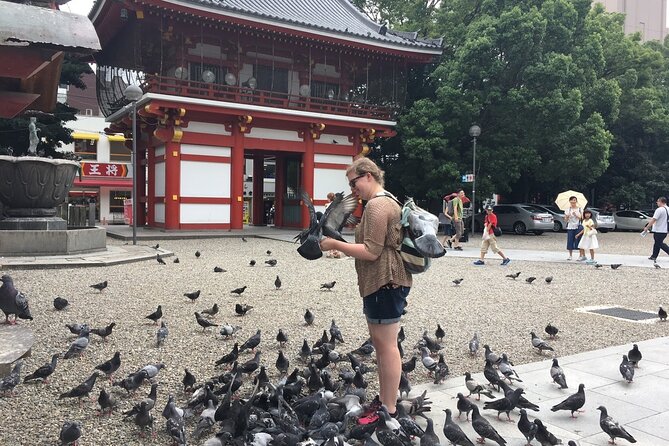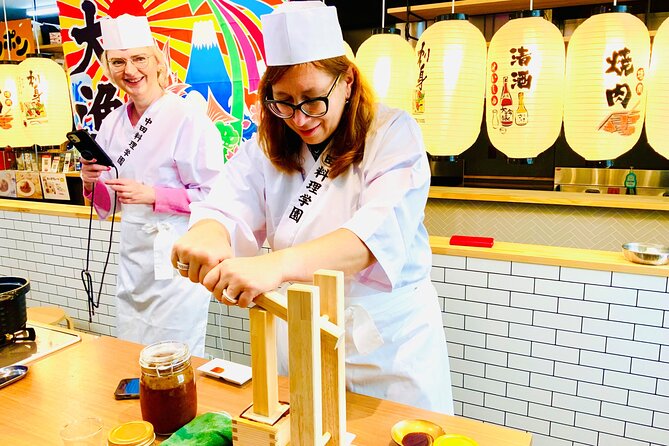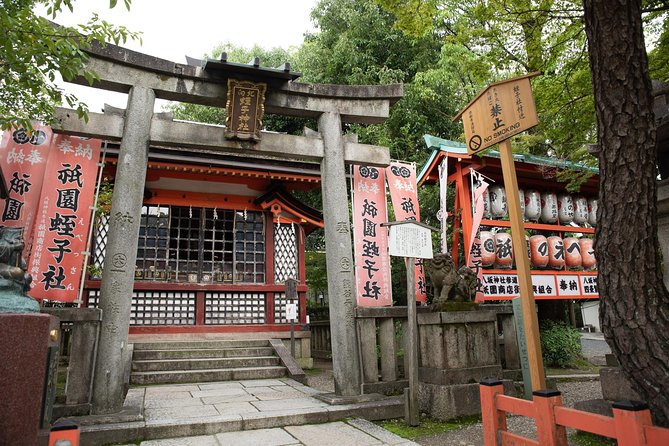In Japan, bento boxes are more than just a meal – they’re a representation of love, care, and community. With the rise of kawaii (cute) culture, bento boxes have evolved into miniature works of art, featuring adorable characters and designs. But what makes a bento box truly special is the thought and effort put into its creation. Imagine crafting a cute face on a boiled egg or shaping sliced meats into animal figures – it’s a culinary experience like no other. But just how do the Japanese master this art form, and what secrets can be uncovered in a traditional bento-making class?
Just The Basics
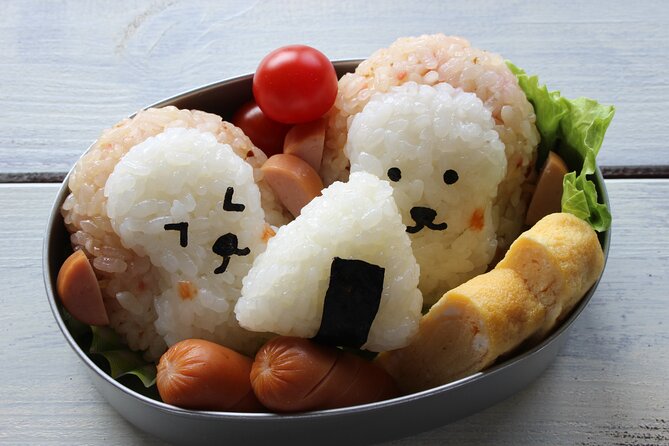
• Learn to create a bento box with a cute character look in a private cooking studio in Minato City, Tokyo, Japan.
• Use food-grade markers, nori seaweed sheets, and colorful vegetables to create adorable designs on your bento box.
• Create cute faces on boiled eggs, animal shapes using sliced meats and cheese, and fun shapes from bread or crackers.
• Experiment with ingredients and techniques to unleash your creativity and make your bento box stand out.
• Understand the significance of bento culture in Japan, where presentation is crucial, and mealtime is a moment for connection and bonding.
It's also worth checking out some other tours and experiences nearby.
Booking and Meeting Details
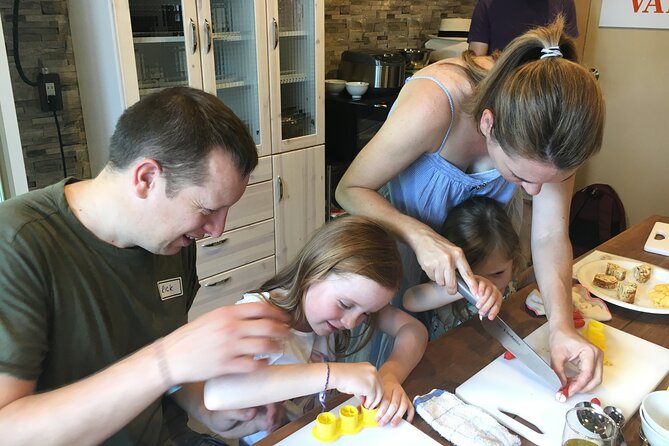
When booking a bento box-making class with Patias Japanese Cooking Class, confirmation is received immediately, ensuring a smooth and hassle-free experience from the get-go.
The class requires a minimum of two people per booking, and a maximum of 15 travelers.
It’s essential to note that the cooking studio location will be informed after booking confirmation, so be sure to check your email.
Please arrive at the designated studio before the start time, which is 11:00 am.
Private transportation and meeting/pickup services are available for added convenience.
The class isn’t wheelchair accessible, and infants must sit on laps.
Plus, it’s not recommended for travelers with back problems.
Cooking Class Itinerary
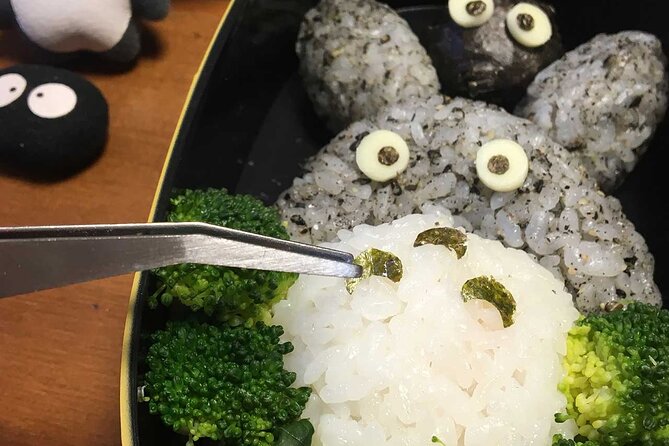
The cooking class itinerary for the bento box-making experience with Patias Japanese Cooking Class is straightforward, with a scheduled start time of 11:00 am at the designated meeting point in Minato City, Tokyo, Japan.
The class will take place at a private cooking studio, the location of which will be shared after booking confirmation. Participants are advised to arrive before the start time to ensure a smooth start.
Start time: 11:00 am at the designated meeting point
Meeting point: Minato City, Tokyo, Japan (near Shinjuku, Chiyoda, Minato, and Shinagawa wards)
Private cooking studio: Location shared after booking confirmation
What to Prepare and Expect
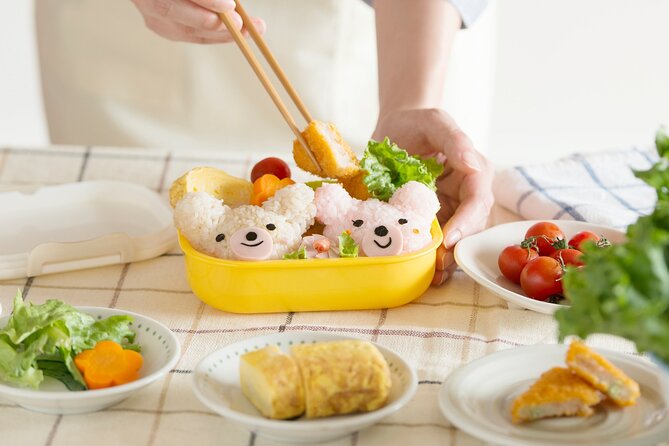
Participants should confirm their booking and receive the cooking studio’s location beforehand to ensure a hassle-free experience. This will help them plan their commute and arrive on time. It’s essential to review the itinerary and understand what’s included in the cooking class.
| Before the Class | During the Class |
|---|---|
| Confirm booking and studio location | Learn to make a bento box with a cute character look |
| Plan commute and arrive on time | Follow the instructor’s guidance and hands-on practice |
| Review the itinerary and what’s included | Enjoy the cooking experience and take photos |
Remember to arrive at the designated studio before the start time, and don’t hesitate to ask questions or seek assistance if needed. With these preparations, participants can focus on having fun and creating their own adorable bento box.
Understanding Japanese Bento Culture
In Japan, bento boxes have evolved beyond a simple meal container to represent a cultural symbol of love, care, and community. They’re often prepared with meticulous attention to detail, showcasing the cook’s dedication to nourishing both body and soul.
This cultural significance is deeply rooted in Japanese tradition, emphasizing the importance of mealtime as a moment for connection and bonding.
Seasonality: Bentos often feature seasonal ingredients, highlighting the country’s appreciation for nature’s cycles and regional flavors.
Presentation: The artful arrangement of food and garnishes is crucial, making each bento a miniature work of art.
Community: Bentos are frequently shared among family, friends, or colleagues, fostering a sense of togetherness and social connection.
Creating Cute Character Designs
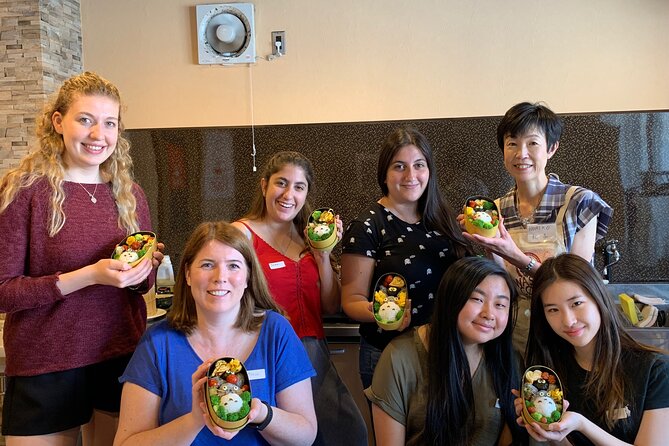
As they master the art of Japanese bento culture, enthusiasts can elevate their creations by incorporating cute character designs that bring an extra layer of personality to each meal.
To create these adorable designs, they can use various ingredients such as food-grade markers, nori seaweed sheets, and colorful vegetables.
For instance, they can draw cute faces on boiled eggs or create animal shapes using sliced meats and cheese.
Another idea is to use small cookie cutters to cut out fun shapes from bread or crackers.
By experimenting with different ingredients and techniques, enthusiasts can unleash their creativity and add a playful touch to their bento boxes.
This attention to detail will surely delight both kids and adults alike.
Hands-on Bento Making Experience
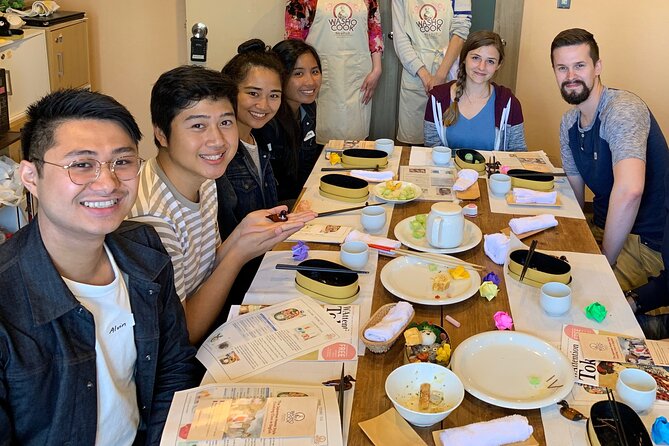
They’ll dive into the world of Japanese cuisine with a hands-on bento making experience, guided by a professional chef at a local cooking studio in Tokyo.
This immersive culinary adventure allows participants to learn the art of creating a visually appealing and delicious bento box. With expert guidance, they’ll master the techniques of preparing a balanced meal, including cooking rice, grilling protein, and crafting cute character designs.
Learn from a pro: Get personalized instruction from a seasoned chef with extensive knowledge of Japanese cuisine.
Hands-on practice: Get creative and practice making your own bento box with provided ingredients and tools.
Take home new skills: Leave with newfound confidence and skills to create stunning bento boxes at home.
Tips for Customizing Your Bento
With their newfound skills in bento making, participants can now experiment with customizing their creations to suit their personal tastes and dietary needs.
They can swap out ingredients to accommodate vegetarian, vegan, or gluten-free diets. Adding a favorite snack or two can also make the bento box feel more personalized.
Don’t be afraid to get creative with colors and textures by incorporating different fruits, nuts, or seeds. Another tip is to consider the character’s facial expression and accessories to match the meal’s theme or the eater’s personality.
Bringing Home Your Masterpiece
Participants carefully package their finished bento creations in specially designed containers to transport them home, where they can be proudly displayed and enjoyed. They can’t wait to share their masterpieces with family and friends, and maybe even inspire others to try their hand at bento-making.
When bringing home your bento, keep the following tips in mind:
Handle with care: Make sure to hold the container securely to prevent any accidental spills or messes.
Store in the refrigerator: Keep your bento fresh by storing it in the refrigerator until you’re ready to serve.
Serve and enjoy: Finally, it’s time to sit back, relax, and enjoy the fruits of your labor!
Here's a few more nearby tours and experiences we think you'll like.
Frequently Asked Questions
Can I Customize the Bento Box With My Favorite Character?
She wonders if customization is an option, and the answer is yes, she can likely request her favorite character design, but it’s best to ask the cooking class operator, Patias, in advance to confirm their flexibility.
Are Ingredients and Cooking Tools Provided in the Class?
She confirms that ingredients and cooking tools are indeed provided in the class, so participants don’t need to bring anything except their enthusiasm and appetite, making it a hassle-free culinary experience.
Can I Take Photos During the Cooking Class?
She can take photos during the cooking class, but it’s essential to ask the instructor first, as some classes might have restrictions; generally, photography is allowed for personal use, not for commercial purposes.
Are There Vegetarian or Gluten-Free Options Available?
She checks the cooking class details and finds that dietary restrictions aren’t explicitly mentioned. However, she suggests contacting Patias Japanese Cooking Class directly to inquire about vegetarian or gluten-free options, ensuring the class can accommodate her needs.
Can I Book a Private Cooking Class for My Group?
She can book a private cooking class for her group, but it’s essential to note that private transportation and meeting/pickup services are available, and a minimum of 2 people per booking is required, with a maximum of 15 travelers.
Not for you? Here's more of our most recent tour reviews happening neaby
- Lake Ashi Hakone Owakudani Kowakien With Daily Chauffeur
- Lets Lunch / YANAKA MADAME HOME / Local Dish & Rice Ball Making.
- Private Kamakura and Yokohama Sightseeing Day Trip With Guide
- For BUSINESS TRAVELER – Business+Leisure With Jpy⇄Eng INTERPRETER Service
- Tokyo Cyberpunk Street Photo Tour
- One Day Private Tour to Nikko With English Speaking Driver
- Guided Small Group Historical Tour in Asakusa
- Tokyo Authentic Samurai Experience, Bushido at a Antique House.
- Private Akihabara Walking Tour With Otaku and Photography
- Mt. Fuji Private Sightseeing Tour With Local Guide/Photographer
- Tokyo Customized Private Walking Tour With Local Guide
- Full-Day Panoramic Bus Tour in Tokyo With Bay Cruise
- Tokyo City Private Day Tour With Pick Up.
- Challenge Sumo Wrestlers and Enjoy Meal in Tokyo
- Kamakura Tour
Final Words
With a bento box full of character, you’re ready to share your edible art with others.
Remember, it’s not just about the food, but the thought and care that goes into creating each box.
Take your newfound skills home and experiment with different ingredients and designs.
Who knows, you might just start a bento-making revolution in your community!

